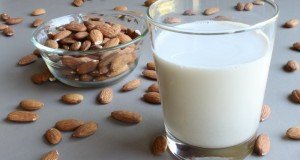New sepsis treatment reduces death by 87 percent
(NaturalHealth365) Sepsis, a body-wide infection that can progress to shock and organ failure, features a grim mortality rate of 30 to 50 percent. In fact, one out of every three patients who die in a hospital bed has sepsis – which claims a shocking 270,000 lives in the United States every year.
Now, a new study reveals that a revolutionary vitamin C-based protocol is slashing sepsis mortality rates – causing some to hail it as a ‘miracle.’
Of course, the extraordinary results come as no surprise to high-dose vitamin C pioneers – such as Dr. Thomas E. Levy – who have long advocated for the use of vitamin C in treating disease!
Vitamin C treatment caused mortality rates to plummet
To conduct the retrospective clinical study, researchers compared outcomes of 47 sepsis patients – treated with a combination of intravenous vitamin C, hydrocortisone and thiamine – with 47 sepsis patients treated with conventional medications.
And the results were astounding!
The progressive vitamin C treatment reduced mortality among the sepsis patients by 87 percent (when compared to patients who had been treated with standard therapy.)
Only four of the 47 patients treated with the progressive therapy died – as opposed to 19 of the 47 conventionally-treated patients.
In addition, not one of the patients in the vitamin C group developed organ failure. Furthermore, all of them were able to be weaned off vasopressors (used to ward off dangerous drops in blood pressure that can strike sepsis patients) more quickly than the conventionally-treated group.
Medical professionals deem the mixture a “miracle juice”
The study, which was published in the journal Chest, involved patients at Sentara Norfolk General Hospital in Norfolk, VA.
The patients received the vitamin therapy under the care of Dr. Paul E. Marik. Dr Marik, chief of pulmonary and critical care at Eastern Virginia Medical School, instituted the protocol after reading about intravenous vitamin C in medical journals.
The simple, non-toxic protocol consists of 1.5 grams of intravenous vitamin C every six hours for four days, 200 mg of thiamine – or B1 – every twelve hours for four days, and 50 mg of hydrocortisone every six hours for seven days, followed by a three-day taper.
Over 700 patients in the United States have been treated with Dr. Marik’s protocol to date – at a cost of about $60 per patient.
Compare this to the hundreds of thousands of dollars spent to treat sepsis patients with standard medications!
In an article in The Virginian-Pilot, an ICU nurse at Sentara Norfolk marvels at the treatment results, saying she had witnessed “one patient after another” experiencing remarkable results. “They’d be at death’s door and, 24 to 48 hours later, they had turned around,” she reported.
Is it any wonder that the mixture is commonly referred to by some on the hospital staff as “miracle juice?”
Sepsis is associated with a raised risk of premature death – even years later
Sepsis is usually triggered by a bacterial infection, followed by an extreme over-reaction by the immune system. The inflammatory responses that are unleashed can cause oxidative damage, widespread and abnormal blood clotting, mitochondrial dysfunction and loss of circulation in major organs.
In severe cases, septic shock – in which blood pressure plummets and organs fail – ensues, and may lead to death. Making sepsis even more dangerous is the fact that the debilitating effects persist for months, with over 40 percent of sepsis patients returning to the hospital within 3 months of being discharged.
The somber fact is: even after recovery from sepsis, the risk of dying can remain elevated for years to come.
Red ALERT: Low vitamin C levels are associated with sepsis
Antioxidant and anti-inflammatory, vitamin C seems uniquely qualified to fight sepsis. Vitamin C suppresses inflammation, combats oxidative damage, improves circulation to organs, and boosts the immune system.
Research has also shown that vitamin C and hydrocortisone work together to protect against the capillary leakage that often attends sepsis. Significantly, new evidence has emerged showing that shortfalls in vitamin C can raise the risk of this life-threatening condition.
A 2017 study found that virtually all critically ill sepsis patients had low vitamin C, with 40 percent displaying outright deficiencies. And this was the case despite the fact that the patients were being given dosages of 125 mg of vitamin C per day.
Of course, natural health experts maintain that 125 mg is a woefully inadequate dose – especially for those who are sick. Illness has the effect of depleting vitamin C levels, robbing patients of this important nutrient at a time when they need it most.
Recent research supports the vitamin C protocol
Despite the success rate of intravenous vitamin C, physicians who use it often face a firestorm of criticism from their peers in the mainstream medical community – with some doctors maintaining that the therapy is ‘unproven and ineffective.’
Dr. Marik is philosophical about the negative reaction from the mainstream medical community. “When something is too good to be true, people don’t want to believe it,” he declares.
But, recent peer-reviewed studies and articles are causing some to “change their tune.”
In a 2018 review published in the well-regarded, peer-reviewed Journal of Critical Care, the authors acknowledged that vitamin C could mediate inflammation through its antioxidant activities.
The team reported that emerging evidence supports the administration of vitamin C, in addition to standard therapy, to ease the effects of inflammation and improve blood flow to organs in patients with sepsis and septic shock.
The researchers called for further study to explore the potential of vitamin C therapy. And, they will get their wish.
No less than eight new clinical trials – some using the same three constituents utilized by Dr. Marik – are scheduled to take place in 2018.
As for Dr. Marik, he calls the protocol “safe, cheap and effective.” He also has a more direct way to describe the treatment – “the cure for sepsis.”
Scientific research may just prove him right.
Sources for this article include:
LifeExtension.com
NIH.gov
Pilotonline.com
NaturalHealth365.com











